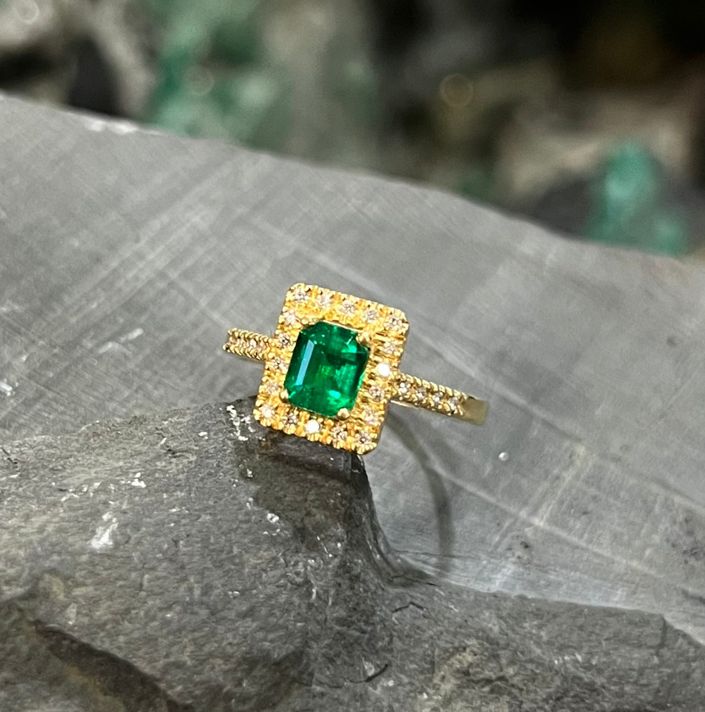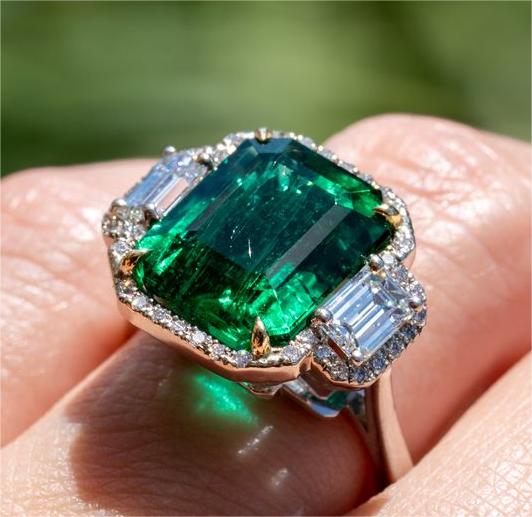The Green War: The Conflict of Colombian Emeralds
For no one it is a secret that Colombia experienced one of the most violent times in its history during the Green War, a struggle that for years had as its center the total control of the emerald areas of the country.
It was more than 21 years and several Colombian families who disputed control of the emerald mines in Boyacá. The result of this struggle would write with blood letters the history of Colombian emeralds.
He knows all about this war and the ravages he left today reading this entry.
Background: the general emeralds
After the War of Independence, a long tradition was established in Colombia, according to which the State granted individuals the right to the exploitation of natural resources. At that time, senior officers and those who won wars were favored.
It was 1827, the newly created Ministry of Finance of Greater Colombia granted the exploitation of the mines of Muzo (Boyacá) to General José Paris and to the individuals Carlos Stuard and Mariano Rivera.
Since then, a before and after the Green War was marked in the country. It would be from 1950 when the appearance of the birds in Boyacá would give the green light to the time of bipartisan violence and with it the first emerald war that Colombia lived.
The 3 green wars
- First Green War
The first of these wars arose between Humberto Ariza, alias El Ganso, second in command of the legendary bandit Efraín González, and a group of emeralds known as "La Pesada," which had been strengthened by the exploitation of the Peñas Blancas mine and, in addition, by its political relations.
Everything originated after the death of Gonzalez, who had been the military chief of the emerald area. After his death Ariza acquired command, but was faced by his employers, who saw great opportunities to legalize mining, but knew that being related, banged, as the Goose, would bring them great difficulties.
This led to strong tensions that generated clashes with a balance of about 1,200 dead, culminating in the capture of Ariza and the triumph of the group "la Pesada," to which belonged characters such as Isauro Murcia, Parmenio Molina, Julio Rincón, Gilberto Molina and the renowned, Victor Carranza.
- Second war
It began in 1975 with the murder of the brothers of the emerald Francisco Vargas. Later in 1979 Isauro Murcia dies and Gilberto Molina took his post.
During these years, drug traffickers Gonzalo Rodríguez Gacha, also known as an important Colombian terrorist, paramilitary and criminal, co-founder and head of the Medellín Cartel, also known as an important Colombian terrorist, paramilitary and criminal, appears in the emerald business.
In 1980, in Muzo, there were 35,000 guaqueros (miners engaged in the extraction of fine stones). It was there that the formation of two large groups of miners, one from Coscuez, Maripí and Pauna and the other of Otanche, Borbur, Santa Barbara and Muzo began.
- Third war
The third Green War was presented at the beginning of the 21st century between the group of Victor Carranza and a group of emerging emeralds. This war broke out on the number of important characters who fell down, including bosses, planters, lawyers and lieutenants.
The conflict arose after the capture, on February 24, 1998, of Victor Carranza, when he was accused of paramilitarism, an issue that was taken advantage of by a group of emerging emeralds, mainly from the municipality of Maripí, to strengthen and question the power of the famous Tsar.
Carranza was arrested in 2001, but the emerald area already had a new group of patrons. This resulted in heavy blows from the side and side that ended with the defeat of the emerging side, while Carranza, the powerful "zar," died of natural causes.
The new emerald patterns
In early 2018, Canadian equity firm Fura Gems took 76% of Esmeracol S.A.'s shares. Fura Gems made this transaction in the face of the surprise departure of the Gemfields company, to control and exploit the important Coscuez mine. Companies such as Emporium retained a 21.71% stake in the project and minority shareholders were left with 2.29%.
The arrival of these companies has been enthusiastically seen by sectors of the national government, who claim that it is a vital step towards the formalization of the business, which, despite the beauty of the gems, has had a rather negative image on account of the violent actions and links to illegal activities of some members of the guild.
To this extent, several of these companies have changed traditional practices for mine work, given the existence of wages and social security for workers, as well as security measures and the development of foundations dedicated to social investment.
Paula A. Bonilla
Social communicator and journalist from Sergio Arboleda University in Colombia. She is also a jeweler and is passionate about constantly learning about precious gems and national high jewelry.
Currently, she is working for one of Bogotá's most important jewelry stores, Emerald by Love. This jewelry store has over 40 years of experience and has 2 physical branches in the capital city of Colombia, located in the city center.


